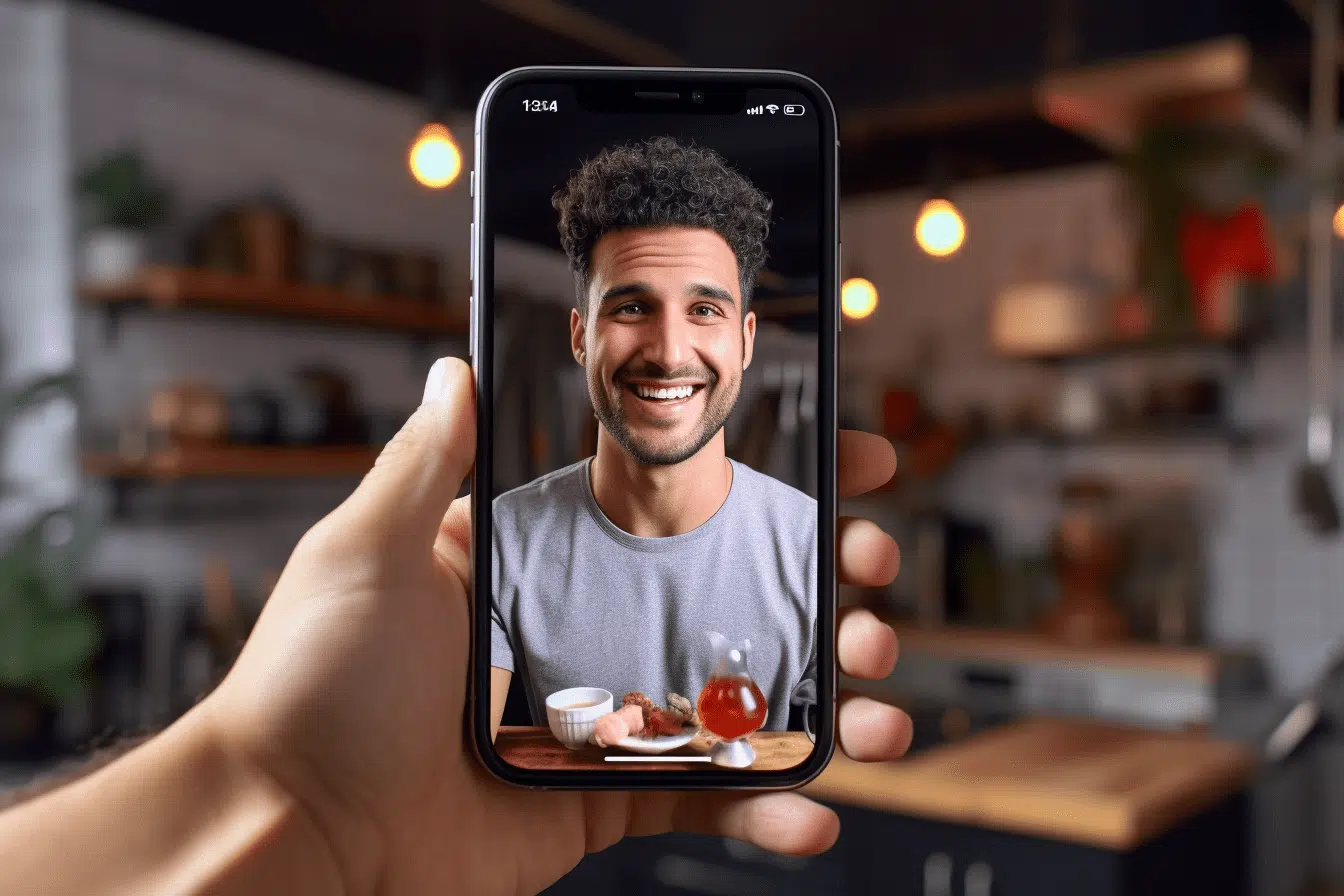The Power of Effective Ad Designs
Introduction to Ad Designs in Ecommerce
In the world of ecommerce, ad designs play a crucial role in capturing the attention of potential customers and driving sales. Ad designs encompass the visual and messaging elements of an advertisement, working together to create a compelling and persuasive marketing tool.
With the rise of online shopping, businesses need to stand out among the competition and make a memorable impression on their target audience. Effective ad designs enable brands to communicate their value proposition, showcase their products or services, and create a connection with their customers.
Importance of Effective Ad Designs
Effective ad designs are essential for several reasons. Firstly, they grab the viewer’s attention in a crowded digital landscape. With countless ads fighting for attention, a well-designed ad can make the difference between being noticed or being ignored. Eye-catching visuals, compelling headlines, and a clear call to action are key elements in capturing the viewer’s interest.
Secondly, effective ad designs convey the brand’s message and value proposition clearly and concisely. In a limited amount of space or time, ad designs need to communicate the benefits of the product or service being advertised and why the viewer should choose it over alternatives. A clear and concise message helps to pique the viewer’s curiosity and encourages them to learn more.
Lastly, effective ad designs influence the viewer’s decision-making process. A strong visual impact combined with persuasive messaging can create an emotional connection and desire for the product or service. By engaging the viewer’s emotions and addressing their pain points or desires, ad designs can drive them to take action, whether it’s making a purchase, signing up for a newsletter, or visiting a website.
To create effective ad designs, businesses need to consider the visual and messaging elements that resonate with their target audience. Understanding the preferences, needs, and motivations of the target audience is crucial in crafting ad designs that are relevant and compelling.
By investing in effective ad designs, businesses can enhance their brand’s visibility, increase customer engagement, and ultimately boost their ecommerce success. In the following sections, we will explore the key elements of effective ad designs, different types of ad designs, best practices, and metrics to measure their success.
Elements of Effective Ad Designs
To create impactful ad designs in the world of ecommerce, it’s important to consider three key elements: compelling visuals, clear and concise messaging, and a strong call to action.
Compelling Visuals
Compelling visuals play a crucial role in capturing the attention of your target audience. Eye-catching images or videos can draw viewers in and make them more likely to engage with your ad. When selecting visuals for your ad, choose high-quality images or videos that align with your brand and resonate with your target audience. The visuals should be visually appealing, relevant, and able to convey your message effectively.
To create visually appealing ad designs, consider the following:
- Use high-resolution images or videos that are clear and visually striking.
- Incorporate colors, fonts, and graphics that align with your brand identity.
- Showcase products or people in a way that evokes emotions and captures attention.
- Keep the overall design clean and uncluttered to avoid overwhelming the viewer.
Clear and Concise Messaging
In addition to compelling visuals, clear and concise messaging is essential for effective ad designs. Your messaging should be easy to understand and quickly convey the value proposition or benefit of your product or service. Craft a concise headline or tagline that grabs attention and entices viewers to learn more.
To ensure clarity in your messaging:
- Use clear and concise language that is easy to understand.
- Highlight the key features, benefits, or unique selling points of your product or service.
- Tailor your messaging to resonate with your target audience’s needs and desires.
- Consider using bullet points or short phrases to communicate information effectively.
Strong Call to Action
A strong call to action (CTA) is a vital component of any ad design. It guides viewers on what action to take next and encourages them to engage with your brand. Your CTA should be clear, compelling, and aligned with your advertising goal, whether it’s making a purchase, signing up for a newsletter, or visiting your website.
To create a strong call to action:
- Use action-oriented language that prompts immediate action, such as “Shop now,” “Sign up today,” or “Learn more.”
- Make your CTA visually prominent, using design elements like buttons or contrasting colors to draw attention.
- Create a sense of urgency or exclusivity by incorporating words like “limited time offer,” “exclusive deal,” or “while supplies last.”
- Ensure that your CTA is linked to the appropriate landing page or action, providing a seamless user experience.
By incorporating compelling visuals, clear and concise messaging, and a strong call to action, you can create ad designs that effectively capture the attention of your target audience and drive them to take the desired action. Remember to constantly analyze and optimize your ad designs based on ad creative performance metrics, as this will help you refine your approach and achieve greater success in your ecommerce advertising efforts.
Types of Ad Designs
When it comes to creating effective ad designs for ecommerce, there are several options to consider. Each type of ad design has its own strengths and can be used strategically to capture the attention of your target audience. Here are three common types of ad designs you can utilize:
Static Image Ads
Static image ads are a classic and widely used format in ecommerce advertising. These ads consist of a single static image that conveys your message and promotes your product or service. Static image ads are known for their simplicity and ease of creation. They can be highly effective when the image is visually appealing, attention-grabbing, and relevant to your target audience.
Key advantages of static image ads include their quick loading times and compatibility across various platforms. With careful design and compelling visuals, static image ads can effectively showcase your products and drive conversions. It’s important to optimize the image size and resolution to ensure a seamless user experience.
Video Ads
Video ads have gained significant popularity in recent years due to their engaging and dynamic nature. These ads utilize moving visuals, sound, and sometimes text to tell a story, demonstrate product features, or create a memorable brand experience. Video ads can be highly effective in capturing attention and conveying your brand’s message in a visually appealing and immersive manner.
With the rise of social media and video-sharing platforms, video ads have become even more accessible and shareable. They allow you to showcase your products in action, demonstrate how they solve a problem, or create an emotional connection with your audience. However, it’s important to keep video ads concise and attention-grabbing to maintain viewer engagement.
Carousel Ads
Carousel ads are a versatile format that allows you to showcase multiple images or videos within a single ad unit. Users can swipe or click through the carousel to explore different products, features, or benefits. Carousel ads provide an interactive and engaging experience, enabling you to highlight a range of products or tell a story in a single ad.
One of the key advantages of carousel ads is their ability to cater to different user preferences and capture their attention with variety. You can include multiple visuals, each with its own headline, description, and call to action. Carousel ads are particularly useful when promoting a collection of products, showcasing before-and-after results, or sharing step-by-step instructions.
By considering the strengths and characteristics of each ad design type, you can choose the one that aligns best with your campaign objectives and target audience. Remember to optimize your ad designs for different platforms and devices to ensure maximum reach and engagement. Experiment with different ad formats and track their performance using ad creative metrics to refine your strategy and drive success in your ecommerce advertising efforts.
Best Practices for Effective Ad Designs
To create effective ad designs that capture the attention of your target audience and drive results in ecommerce, it’s important to follow some best practices. By understanding your target audience, using high-quality images and videos, and optimizing for mobile, you can enhance the effectiveness of your ad campaigns.
Understand Your Target Audience
Before creating ad designs, it’s crucial to have a deep understanding of your target audience. This involves researching their demographics, preferences, and pain points. By knowing your audience, you can tailor your ad designs to resonate with their interests and needs.
Consider factors such as age, gender, location, and interests when designing your ads. Use language and visuals that will appeal to your specific audience segment. For example, if your target audience is young adults interested in fitness, your ad designs should reflect that demographic, using energetic visuals and compelling messaging. Understanding your target audience allows you to create ad designs that are more relevant and engaging.
Use High-Quality Images and Videos
When it comes to ad designs, visuals play a critical role in capturing attention and conveying your message effectively. To make an impact, use high-quality images and videos that are visually appealing and relevant to your product or service. Blurry or pixelated visuals can give a poor impression and reduce the effectiveness of your ads.
Invest in professional photography or use stock images that align with your brand and target audience. Ensure that the visuals are clear, well-lit, and showcase the key features or benefits of your product. If using videos, keep them concise and engaging, grabbing attention within the first few seconds.
Additionally, consider the aspect ratio and format requirements for different ad platforms. Optimizing your visuals for each platform ensures that they display properly and look their best, enhancing the overall impact of your ad designs.
Optimize for Mobile
With the increasing use of mobile devices, optimizing your ad designs for mobile is essential. Ensure that your ads are mobile-friendly and provide a seamless experience for users on smartphones and tablets. Mobile optimization includes factors such as responsive design, fast loading times, and easy navigation.
Design your ads to fit smaller screens without sacrificing readability or visual impact. Use clear and concise messaging that is easily understood on a smaller display. Test your ad designs on different mobile devices to ensure they render correctly and provide a positive user experience.
Consider creating mobile-specific ad formats or utilizing the full potential of interactive elements that are more engaging on mobile devices. By optimizing your ad designs for mobile, you can reach a wider audience and maximize the effectiveness of your campaigns.
By following these best practices, you can create ad designs that resonate with your target audience, effectively communicate your message, and drive results in ecommerce. Remember to continuously test and iterate your ad designs based on performance metrics to further improve their effectiveness.
Measuring the Success of Ad Designs
To evaluate the effectiveness of ad designs in ecommerce, it’s crucial to measure key metrics and utilize testing methods to optimize performance. This section will explore the key metrics to track when assessing ad design success and the importance of A/B testing and iteration.
Key Metrics to Track
To gauge the performance of ad designs, it’s essential to monitor and analyze key metrics that provide insights into their effectiveness. Here are some important metrics to track:
- Click-Through Rate (CTR): CTR measures the percentage of people who click on your ad after seeing it. A high CTR indicates that your ad design is compelling and engaging, capturing the attention of your target audience.
- Conversion Rate: Conversion rate tracks the percentage of users who take the desired action after clicking on your ad, such as making a purchase or subscribing to a newsletter. This metric indicates how effective your ad design is in driving user actions.
- Return on Ad Spend (ROAS): ROAS measures the revenue generated for every dollar spent on advertising. It helps determine the profitability of your ad campaigns and whether your ad designs are delivering a positive return on investment.
- Cost per Acquisition (CPA): CPA calculates the cost incurred to acquire a new customer or lead. By tracking this metric, you can assess the efficiency of your ad designs in acquiring customers and optimize your advertising budget.
- Engagement Metrics: Engagement metrics, such as likes, comments, and shares, provide insights into how users are interacting with your ad design. High engagement indicates that your ad is resonating with your audience and generating interest.
Monitoring these key metrics allows you to measure the success of your ad designs and make data-driven decisions to optimize future campaigns.
A/B Testing and Iteration
A/B testing is a valuable technique for evaluating the performance of different ad designs and making data-informed decisions. By creating multiple variations of your ads and testing them on a subset of your target audience, you can compare their performance and identify the most effective design.
When conducting A/B tests, it’s essential to focus on testing one element at a time to isolate the impact of each change. For example, you could test different visuals, call-to-action buttons, or ad copy. By comparing the performance of these variations, you can identify the elements that resonate most with your audience and improve your ad designs accordingly.
It’s important to note that A/B testing should be an ongoing process. As consumer preferences and market dynamics change, it’s crucial to continuously iterate and optimize your ad designs to stay ahead. Regularly analyze the results of your A/B tests and make incremental improvements to enhance the effectiveness of your ads.
By leveraging A/B testing and closely monitoring key metrics, you can refine your ad designs to maximize their impact and drive better results in your ecommerce campaigns.
Remember, effective ad design is essential for capturing the attention of your target audience and driving conversions. To learn more about creating compelling ad designs, check out our articles on ad creatives and best ad campaigns.







